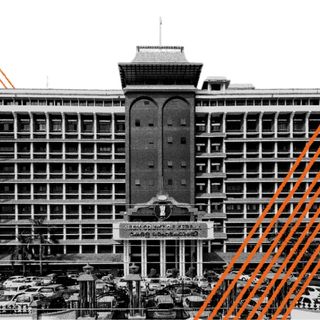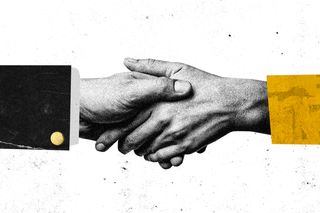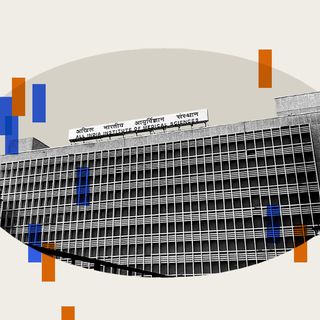
Friendships Between the Rich, Poor Helped Reduce Poverty, Shows U.S. Study
An analysis of billions of Facebook connections shows how social capital shapes mobility around class barriers.

What makes social mobility possible for some, and impenetrable for others? Take Person A and Person B, both of whom live in relatively similar neighborhoods, and earn similar incomes. But person B may have a higher chance of acquiring a higher-paying job and accessing newer networks and opportunities. This disregards the social science theory that the financial circumstances of where children are born usually decide where they end up as adults. If one is born in poverty, it’s incredibly hard to escape it.
But Person B did. Like B, some seem to climb up the metaphorical ladder of social inclusion, while others never do. There’s no secret, magic recipe here, though. Instead, it is the individual friendships people foster that could decide their trajectory on the income scale, according to a pair of new studies.
Almost two dozen researchers in the U.S. looked at friendships between wealthier and poorer people; they found that connections formed as young children, too, can lead to increased earnings later in life for the latter. Published in Naturejournal on Monday, the studies use big data in the form of analyzing billions of Facebook connections to illustrate an oft-known fact, that it pays to have friends in high places. This is the largest visualization of how social networking works informally but actively, and how social connections become arbitrary but potent models of uplifting people out of poverty.
“Low levels of social interaction across class lines have generated widespread concern, and are associated with worse outcomes, such as lower rates of upward income mobility,” the researchers wrote in the study. It illustrates how people form cross-class relationships, which further impacts the economic mobility of their children.
The researchers examined Facebook connections of almost 72 million people based in the U.S., adults aged between 25 and 44. This meant going through datasets of 81 billion friendships — roughly 45 times the size of India’s population — to trace the kind of social relationships across American neighborhoods. The study found that poorer individuals who grew up in neighborhoods, where 70% of their friends were wealthy and/or had more cross-class interactions — which the researchers dubbed “economic connectedness” — registered an increased income by 20% on average. This is a significant statistic jump.
In other words, the degree of social and economic connection between individuals from different classes determined their upward income mobility, more so that any other intervention.
Related on The Swaddle:
India’s Rich Outlive the Poor by 7.5 Years Due to Health Inequalities: Oxfam Report
The economic connectedness the researchers refer to is a form of social capital. “…it is the sum of all the people one knows and the opportunities one has access to, and it can — together, it has the power to define one’s entire career trajectory,” Rohitha Naraharisetty explained in The Swaddle. Social networks are often prolific and fertile, tapping into a form of inheritance that is unequally scattered.
What the expansive new research explores is just how much economic connectedness can help people move upward from poverty. The impact of friendships formed as children was so robust that it factored into one’s economic position, more so than one’s family structure, a community’s racial make-up, access to education, or job availability.
In the current examination, there were two factors that drove the strength of economic connections: “exposure,” which articulates the average number of wealthier people someone meets at school or work, and “friending bias,” which explains why people prefer to hang out with others from similar socio-economic backgrounds. While the said exposure through informal networks helped one’s economic mobility, a friending bias prevented it.
Think private schools, and how social cliques form along the lines of one’s class and caste backgrounds. There is a worryingly large body of research documenting the bias, discrimination, and exclusion children — in India and otherwise — face when they go to schools in privileged neighborhoods. It is a friending bias that prevents the success of affirmative action policies that focus on increasing exposure alone. The bias does little to catalyze economic connectedness, the researchers noted. A lack of exposure, or segregation, then becomes central to caste-based social and economic marginalization of people; in the U.S., estimates suggest segregation is the root of almost half of the social disparity.
Moreover, forming friendships in and of itself is difficult for children and adolescents. For instance, this 2015 research conducted by Swedish researchers found the role both family income and children’s own resources played in shaping friendships. Poorer adolescents are likely to have fewer friends, mostly due to a lack of economic resources and the social isolation they may face due to a friending bias.
Related on The Swaddle:
The Nepotism Debate Keeps Going in Circles. How Do We Move Forward?
The new analysis presents poverty not as a monolith of economic injustice, but as one that is flexible and varies across neighborhoods — depending on the social relationships that prevail across a community. This framing of poverty sits in sharp contrast with the myth of hard work that leads to success, or even with the American dream that promises an opportunity to success if only one is willing to work hard enough.
Recognizing cross-class friendships, then, can also be a way to shape social welfare interventions. The researchers have released a public dataset that tracks the level of interconnectedness between the rich and poor, segregated by districts and pin codes in the U.S. This can help officials to tailor economic welfare and social inclusion policies specific to given localities, responding to the people and communities that live there.
“We demonstrate how the data we release publicly can be used to inform interventions to increase cross-class interaction by identifying where efforts to increase socio-economic diversity versus reduce friending bias would be most valuable.”
Moreover, a spate of other policies — like endorsing affordable housing and reshaping zoning policies that allow for friending bias to grow — can also be conceptualized based on the idea of friendships.
Here’s what this could look like. In a Texas high school, researchers observed students from different socio-economic backgrounds, but there prevailed a high-friending bias, nonetheless. The school’s architecture worsened this gap, there existed three different school cafeterias where different social cliques held court. So, despite the mere presence or exposure of children from marginalized communities, there was little by way of progress. Instead, researchers suggest reshaping the architecture such that there is one single lunchroom — a place for friendships to foster.
Social biases are an ever-morphing beast with deep-rooted tentacles in our ideologies, thinking systems, and social structures. Friendship can be central to any dream, if only one acknowledges the structures of inheritance and privilege as a capital that is unequally claimed. There is also an interesting question to be asked here. If the kindness and sustainability of friendships can indeed tangibly support people economically, can people be trained to form friendships — both ideologically and practically?
Saumya Kalia is an Associate Editor at The Swaddle. Her journalism and writing explore issues of social justice, digital sub-cultures, media ecosystem, literature, and memory as they cut across socio-cultural periods. You can reach her at @Saumya_Kalia.
Related


SC, ST Faculty Positions Vacant in AIIMS Despite Eligibility of Applicants, Shows Report
